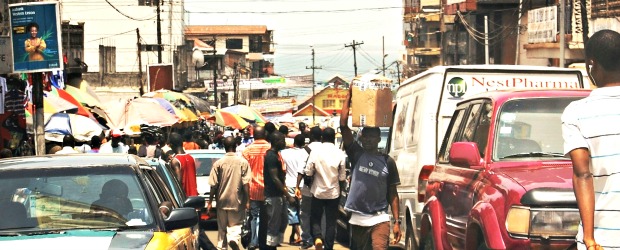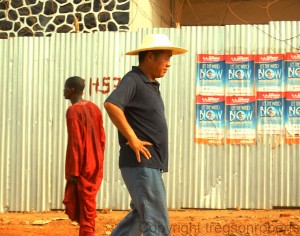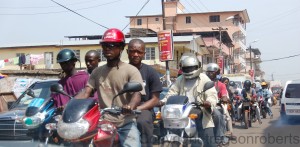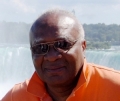You have no items in your cart. Want to get some nice things?
Go shopping
The air is heavy as I step out of the plane. It is mid-afternoon on a mid-January day in 2002 and we have just landed at Freetown’s Lungi International Airport. My heart pounds blood into my brain as it searches for context in a 1994 essay that a friend had insisted I read before coming back to Sierra Leone. When Robert Kaplan, an American journalist, wrote that article for The Atlantic magazine, he titled it The Coming Anarchy. It was a doom-laden piece, peppered with flashes of fire and brimstone prophesies of how the 21st century world would turn out. Worryingly, Kaplan had fingered West Africa, and Sierra Leone, in particular, as to where Armageddon would originate.
Indeed, Sierra Leone had slashed and burned its way into the millennium in the glare of the international press. But now, in 2002, the country had probably averted Kaplan’s apocalypse. Question was, were we merely catching breath before plunging again into another round of self-mutilation?
Of course, it is true that any country that has been through a war must go through a post-war period of greater or lesser duration, even if the break merely meant a pause while conflict is carried on through other means. Meanwhile, the marks of the recent hostilities are everywhere and the city of Freetown has the feel of a town not quite yet itself. There are lots of military charging around in four-wheel drives, the white-painted vehicles of the United Nations contingent for instance, contrasting with the British Army’s dark-green, camouflage-streaked Land Rovers, all the more notable because of the placement of their steering wheel on the right.
Transferring from the airport to the city, too, had an “operational” feel about it. Practical options were limited to a Soviet-era helicopter under the charge of a couple of Ukrainian pilots sweating in rumpled overalls. I stiffened my spine and boarded, with seventeen others. I closed my eyes, and when I re-opened them, after an eternity of seven minutes, we had touched down. I privately awarded myself a medal. That was my second. The first one was for uncommon patience while being “processed” through Immigration and Customs.
Apart from British and United Nations military, Nigerians are also here. They’re the majority in the ECOMOG (shorthand for the Economic Community of West African States Monitoring Group) forces, first deployed in 1997, subsequently taking part in a number of actions, two of which effected the ejection of rebel forces from the Freetown area in 1998 and 1999.
In spite of all the military, the city enjoys relatively free movement. At night though, there are check points, set up presumably to prevent rebels infiltrating under cover of darkness. But the city retains its essential oneness; no divisions into sectors controlled by this or that military authority.
The British, now on relatively light duties, are running a training programme for the Sierra Leone Army. Their initial deployment resulted in an engagement just outside Freetown where they got the better of rebels who had been threatening the international Airport at Lungi. Their non-lethal kit now includes BBC Radio Five Live, broadcasting on local frequencies, ensuring that the boys are not deprived of home comforts entirely. Many other radio stations, including the United Nations Radio, Radio UNAMSIL, add their voice to a clamorous cacophony, intended, it is hoped, to reshape public attitudes and behaviours.
So, Freetown has been put through the fire. Private and public buildings bear silent witness. The day after I arrive, I walk past the blackened hulk of Holy Trinity Church on Kissy Road and wonder if it would ever regain its former glory. But I reflect that this is not the first time that the city has been put to the torch. It recovered then and flourished over the succeeding two centuries.

I say I walk past but more accurately, I shoulder a way through the crowds massed on the pavement. The city is stuffed, bursting at the seams. Refugees, who had sought safety here during the war, are still around, unable or unwilling to return to their devastated villages up-country. They sleep, I am informed, in shifts, because there is not enough floor space for everyone to sleep lying down all at once during regular sleeping hours. Space is at a premium here in this long and narrow city.
Hours later, in the late afternoon, I am on Aberdeen Road on the other side of town. The sun is hanging blood-red over the lagoons, which splash the red back. On the other side of the road, on my right, is a camp, set up for IDP’s, the internally displaced. Some, perhaps many, are mutilated physically and, no doubt, mentally as well, waiting their turn for rehabilitation and re-settlement. Blue smoke billows up from the fires over which the evening meals are being prepared. I catch a glimpse of a young woman, whose arm ends just below the elbow. She tries, using her flowing blouse, to hide her mutilation, that iconic image of the war. I wonder where this particular device of terror came from. I recall that those responsible for this type of atrocity received their ideological and military training in Libya. Perhaps amputation had been part of the curriculum at the “Colonel Qaddafi School of International Chaos”. If so, had their instructors received inspiration from King Leopold II’s army in the former Belgian Congo?
Further along Aberdeen Road, there is The Bridge. This is the bridge where rebel and ECOMOG forces fought it out while a mile away, foreign residents were being evacuated during the 1997 incursion into the city. Crossing it now is a stroll, and I soon reach “Paddy’s”, the night-spot where all kinds of pleasure are to be had or negotiated. There is not much action around the car park. It is too early.
Fast forward a dozen or so years. It is now 2014 and “Paddy’s” is still there. Well, the structure is still standing. The UN and ECOMOG forces have gone, testifying to a return to some normality. The only stragglers are the British, staying on, determined to see that the Sierra Leone military they leave behind is able to defend the republic whilst standing aloof from the rough and tumble of politics. It is a big ask in a society where opportunities for the young ambitious male remain scarce.
The country is still encrusted with diamonds though, and for many, they are the other seduction. The stones are there for the picking, if you happen to be in the right place. And, almost the first story that made the headlines on this latest visit was that of a huge diamond weighing over 150 carats that sold for a reputed $18 million dollars. Straight out of the ground. And there’s the twist. No sooner had the dust settled on that story than a story of another huge stone noisily erupted. However, it turned out that someone was attempting a scam through a piece of creative fiction. But, such is the level of public mistrust that many believed that the object in question was a real diamond but had been switched for glass while going through the authentication process. Things are never what they seem. Especially when it comes to diamonds. Everyone, Sierra Leoneans as well as outside observers, believes in their life-changing potential. It is the management of these expectations that has proved so difficult for the country, ever since the gemstones were discovered here back in the early thirties.

Geology has been exceptionally kind to this land. As I drive up the main road leading to the Provinces, we reach a stretch where the road runs parallel with a new 18 km railway line, built since 2002, for the exclusive purpose of transporting concentrate from the iron ore mines at the northern town of Marampa. These mines were once a major contributor to the economy between the 1930’s and 1975 when operations ceased. Now, in their second life under new management, they are expected to produce more than 6 million tonnes of ore every year.
Marampa is not the only mine that is producing base metals. There are several others. One, located in Tonkolili, and to be operated by China interests, is set to surpass the Marampa operations in millions of tons extracted annually. The Republic of China Armed Forces are here in all but name, digging up minerals, building roads and bridges, hospitals and dams and now, I hear, an airport to replace the one at Lungi. Not much to complain about there. At least, soon, you won’t have to ride a dodgy helicopter to get to the city.

About George Tregson Roberts
George Tregson Roberts is a Freetown-born Sierra Leonean, educated during the sixties at Fourah Bay College and at Newcastle University, where he studied medicine. After retirement as a Consultant Haematologist, he turned to freelance writing among other pursuits and now spends his year with his wife between Toronto, London, and West Africa.

